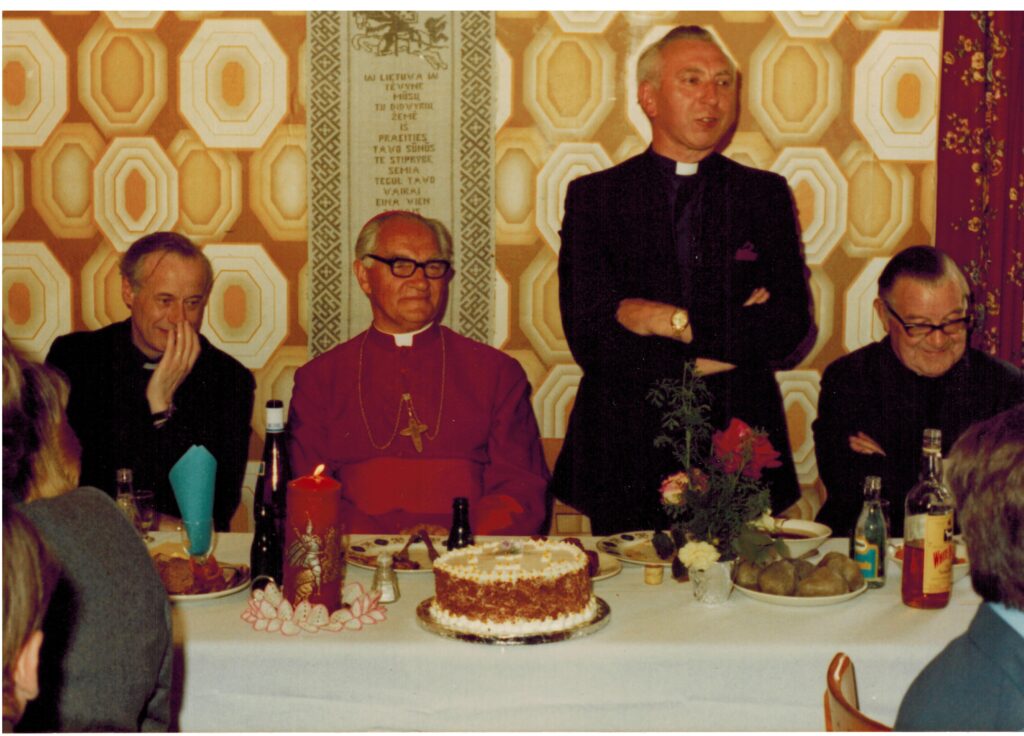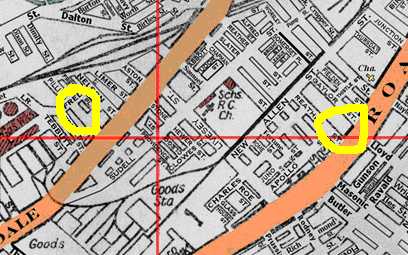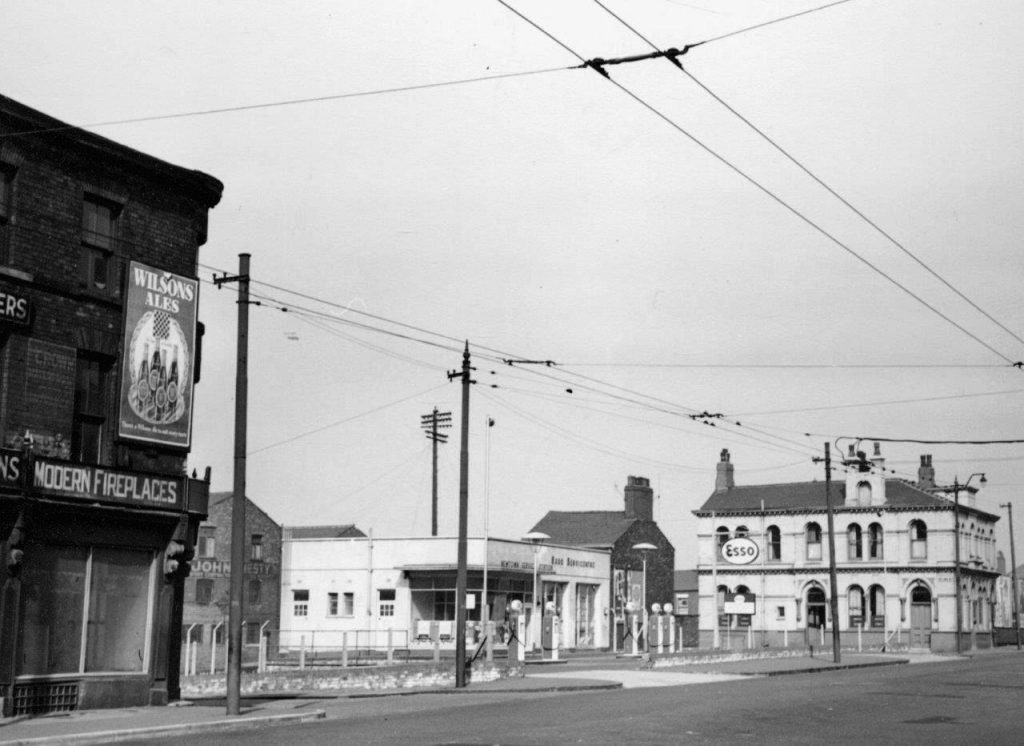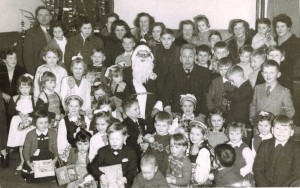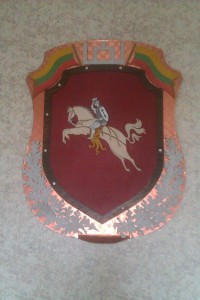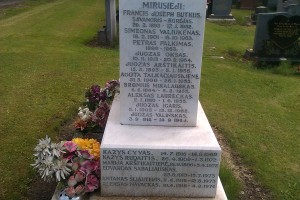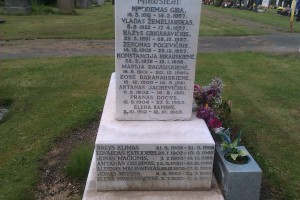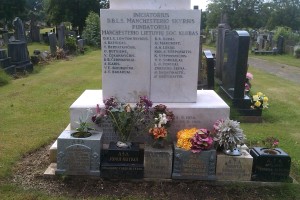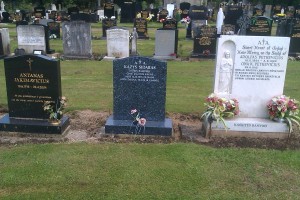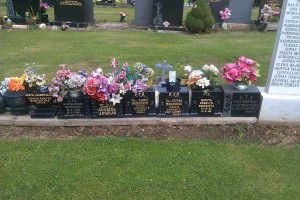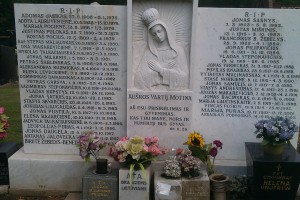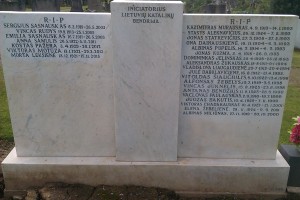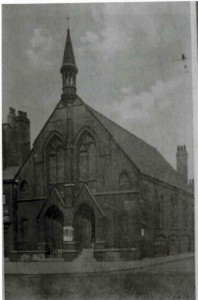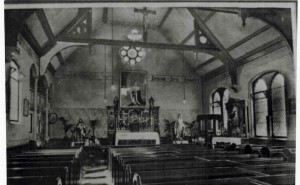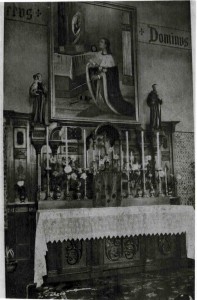This is short summary of how Manchester became home for some 6 generations of Lithuanians, and probably for more. How they got here, grew into a community and how they organised themselves.
Here not by choice
The first wave of immigration from Central Europe started after an uprising in Poland in 1863, which was controlled by Russia then. To suppress it, conscription to the Russian army for 20 years was made earlier. But that only made things worse, and the unrest spread into Lithuania, also controlled by Russia. Rebellion was met with swift public executions and deportation to Siberia.
Many people from the west of The Russian Empire found a way to leave their country, and some came by ship to Gt. Britain and some then on to the US. They landed in Glasgow, London as well as Liverpool. Some moved on to Widnes and to Manchester to find work. Here, there was work in coal, chemicals and textiles. And general work such as carters and labourers. A few managed to set up their own business, as tailors and cobblers.
Renting rooms near work brought fellow countrymen together, such that many came to live in the same streets. The Census from those times shows this. Men would meet up in the local pubs after work and find out about jobs and any new neighbours.
In 1885 there were 7 Lithuanian families living in Manchester. By 1903 there were enough Lithuanians, Polish and Ruthenians [gudai, rusėnai] (Belarusians and Ukrainians) to establish a chapel and a social club, St. Casimir’s. It is interesting to note that “members clubs” could buy beer from the brewery and sell it at a lower price than pubs but only to their registered members. This was a distinct advantage when money was tight. Such membership also helped to strengthen the community and raised funds to support particular causes.
There were several social clubs for East Europeans in Manchester including the Slavonic Club and the Vytautas Club but they had various problems with the law and soon lost their license. When St. Casimir’s chapel (more about this later) transferred to a church on Oldham Road in 1925, the Catholic Club that shared the building with the chapel remained there but became the Lithuanian Social Club. At that time, it had 80 members.
The Social Club raised money for those in need. At that time, there was no national health service or job centre, everything had to be paid for from your pocket but not everyone could afford to do so. Interest groups formed such as the Lithuanian Catholic Society of St. Casimir in 1931. Activities were arranged and annual traditions continued.
A Priest?
This community of mixed ethnicities eventually received a priest, Rev. Foltin who came from Poland. In those days Catholic religious services were in Latin. It is not clear which language the sermon was in, but the congregation were multilingual anyway. And then a church was obtained; St Casimir’s on Oldham Road, and services were transferred from the building on Pilling Street off Rochdale Road. The church initially helped community cohesion.
Unfortunately, tensions on the other side of Europe spilt over into the community in Manchester. Lithuanians fell out with the Polish and boycotted the church. As not enough rent was collected and debts built up, the Bishop of Salford closed St. Casimir’s in 1934. The congregation split into ethnic groups and attended different churches and chapels.
Although this community was referred to collectively as Russians or Poles, some of these people were actually Lithuanians, Poles and Ruthenians (Ukrainians and Byelorussians).
Young men joined the British Army
When WW1 started in 1914, soldiers conscripted to the British Army included those from the immigrant communities, the sons of earlier immigrants born in Manchester.
Trading with Lithuania
Following Lithuania’s independence in 1918, trading with the UK slowly increased and in 1938 a ship called “Kaunas” sailed into Manchester Docks, loaded with mainly pork and dairy products. This was such an inspiring event for the local Lithuanian community. They came to meet the ship and invited the captain and crew back to the Club. The following year, a Lithuanian Consulate was opened in Cannon Street, near the Corn Exchange.
Sadly, then Germany took over Lithuania. Suddenly, local Lithuanians were now classed as “Aliens”. And when Germany bombed Manchester in 1939 everything came to a stop.
After the War
When WW2 was over, displaced persons in camps in Germany were offered work in Britain. The “Westward Ho” scheme had a 2-year work contract with fixed residence in now-disused army camps. When the contract ended, they were allowed to stay anywhere in Britain and to seek work. Once again, countrymen came to live together, close to work locations.
A good example is Eccles, across the canal bridge from Trafford Park, the largest industrial zone in the world. There was work there in textiles in Patricroft and Monton, in engineering in Gardner, Massey Fergusson and Taylor Brothers factories, in Ward and Goldstone plastics and, unfortunately, in Turner’s Asbestos in Trafford Park.
Some bought big houses and rented rooms to countrymen. Others came to live in the same streets and became neighbours. Friendships and families were formed as they kept together.
The Club re-starts
In 1947 the Lithuanian Social Club was revived in a rented building on Rochdale Road. With so many newcomers joining as members, large gatherings such as concerts and commemorations were held in the spacious Blackley Institute on Rochdale Road. Later, Cheetham Town Hall was used.
The newcomers and the existing countrymen came together, uneasily at first. However, it became clear a larger meeting place was needed, bigger than the small premises on Rochdale Road and so a property in Higher Crumpsall was bought. The Lithuanian Social Club continued with committees formed from the old community and the new. This wasn’t easy mainly because of the language barrier; the old ones spoke little Lithuanian, and the new ones spoke little English. Eventually, the old community became outnumbered.
This time, the immigrants were better educated and quickly organised themselves into groups. There was a sports group which focussed on basketball and chess, a women’s group, and folk-dance groups. The annual events calendar was agreed by a coordination committee to avoid clashes.
There were musicians that helped the dancers, small choirs for church and concerts. Those who enjoyed arts and crafts could exhibit their work. Kazys Steponavičius, who made a model of a homestead and called it Sodyba organised an exhibition in Salford that had many exhibits and lasted for 2 months. And Vytas Šiaučulis designed the tall monument for the Lithuanian section in Moston Cemetary
Calendar of annual events
February 16th, Independence Day
Easter
Mother’s Day in May
Whitsun
Darius and Girėnas who flew the Atlantic
Nation Day, remembering King Mindaugas
Army Day in November
Christmas
The Lithuanian army veterans (calling themselves Ramovė) were allowed to join in with the Royal British Legion to commemorate the fallen in war by laying a wreath at the memorial in Eccles. Which they did for decades.
The Manchester community, which includes those in Leigh, Atherton, Bolton, Rochdale, Oldham, maintained close links with those in Bradford, Nottingham, Derby, Wolverhampton as well as London and Glasgow. These larger gatherings and commemorations strengthened the sense of community and helped maintain Lithuanian cultural identity. Choirs, dance groups and singers from overseas added to these occasions.
The next four decades
These were Soviet times. Lithuanians in Lithuania struggled to maintain even superficial links with relatives in the UK. Mail was censored and phone calls had to be ordered in advance. Travel to Lithuania was rarely possible until the 1980s and was very restricted. Those few allowed to come to Britain had to talk about it later, what they did, where they went and who they met there. Those allowed to enter Soviet Lithuania were closely followed.
Meanwhile, the Lithuanians in Gt. Britain continued their traditions and commemorations, and many still hoped one day to return to their homeland. Sadly, many did not achieve that dream. Coal dust, asbestos and cancer bought an early death to many.
Hardly anyone was able to get permission to leave Soviet Lithuania permanently. A small number of Litvaks (Lithuanian Jews) did manage to leave and came to Manchester for a while before moving on.
Politics
There was some involvement in politics, members of the Lithuanian community joined those from other ethnic communities in the Captive Nations Committee. This organised some demonstrations and joint concerts to raise public awareness of the situation in Eastern Europe.
New times
Lithuania restored its independence in 1990. In 1992, Vytautas Landsbergis, who became the first speaker of the new parliament, was attending a conference in Blackpool and was invited to Manchester’s Lithuanian Club. Community representatives from across the country joined local members to welcome him. Regardless of politics, this was indeed a great honour for the Lithuanian community. His visit confirmed what many had lived for during 5 decades.
When Lithuania joined the European Union in 2004, travel became much easier in both directions. The freedom to travel and work brought many young countrymen to the UK, where they could earn much more than back home. And so began yet another migration of Lithuanians to Manchester as well as to other towns and cities. And again, the uneasy mix of different values diminished the initial enthusiasm of both sides. The ‘poor’ newcomers expected a lot more from the ‘rich’ locals, many of whom had started life in Britain with absolutely nothing.
And so to present times
Today a Lithuanian community in Manchester continues to exist. Cohesion seems less strong, but culture and traditions are certainly being maintained. Recently a dance group took part in the Manchester Festival and the Central Library has a Lithuanian section. There is a church available, and a Lithuanian priest comes from London each month. And after Brexit, having ‘settled status’ is not preventing a regular back and forth to the homeland, thanks to Ryanair, Wizz Air and Air Baltic. Travellers also include those from generations born here visiting cousins and relatives, and so reviving their connection to Lithuania.
In 2016 Lithuanian TV and Radio came to film three reports about Manchester’s Lithuanian Community. Those recordings are still available in their archive.
Summary
This short account shows how Manchester became home for some 6 generations of Lithuanians. They came here for refuge and for a better life. Some came for a while and moved on to USA, Canada and Australia. Others stayed here longer and hoped to return to their country one day. And these days newcomers can choose to have a home in two counties if they want to. But Lithuanians do continue to be in Manchester.
From a presentation given in 2022 by J. Podvoiskis.
